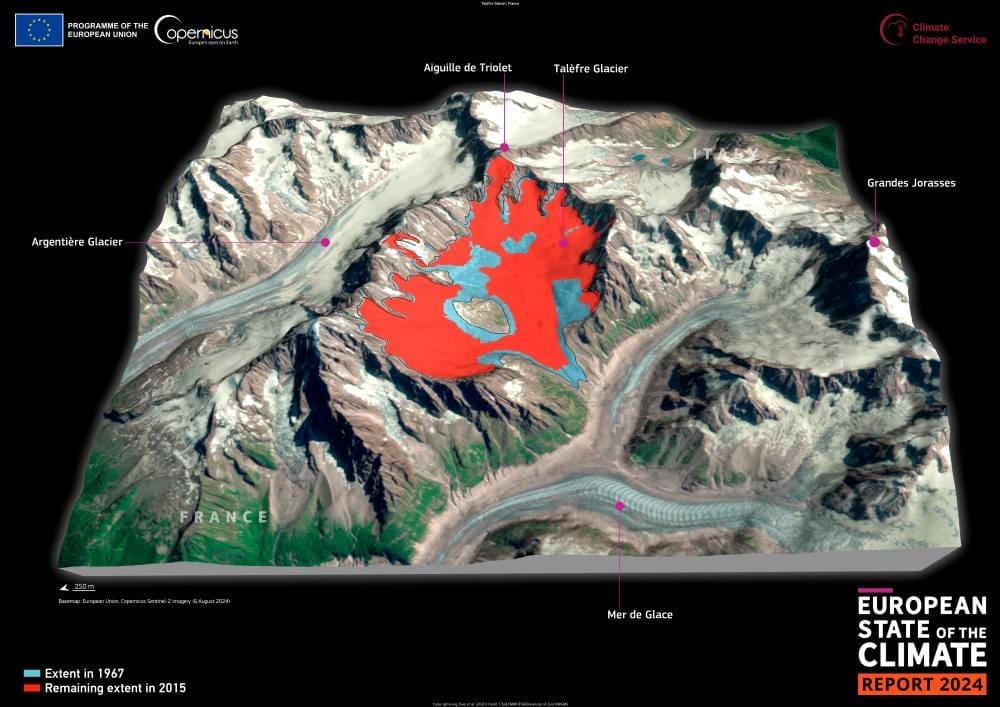The Talèfre Glacier, nestled in the French Alps, has long been a striking feature of the Mont Blanc region. But over the past decades, it has faced relentless retreat. A new image released alongside the European State of the Climate 2024 Report highlights the glacier’s dramatic reduction in size, offering a stark visual reminder of ongoing climate change.
The Copernicus Climate Change Service (C3S) published the report on 15 April 2025, presenting a detailed overview of Europe’s climate in 2024. Among its major findings, the report reveals that glaciers across all European regions experienced further ice loss during the 2023–2024 hydrological year. In the Alps, glaciers lost an average of 1.2 metres of ice thickness in 2024 alone, continuing a decade-long trend of significant decline. The research notes that the Alps remain one of the world’s fastest-retreating glacial regions.

The Copernicus Sentinel-2 image above shows a comparison of the Talèfre Glacier’s extent, contrasting the situation in 1967 with that in 2015. The visible reduction in glacial coverage underscores the impact of persistent warming and changing precipitation patterns in the region.
The European State of the Climate 2024 Report also points to a broader pattern of climate extremes across Europe, with 2024 marked as the continent’s warmest year on record. In addition to glacial retreat, the year brought widespread flooding and striking east-west contrasts in weather patterns.
The full report, offering further insights into Europe’s changing climate, is available here.
Featured image credit: European Union, Copernicus Climate Change Service Data



